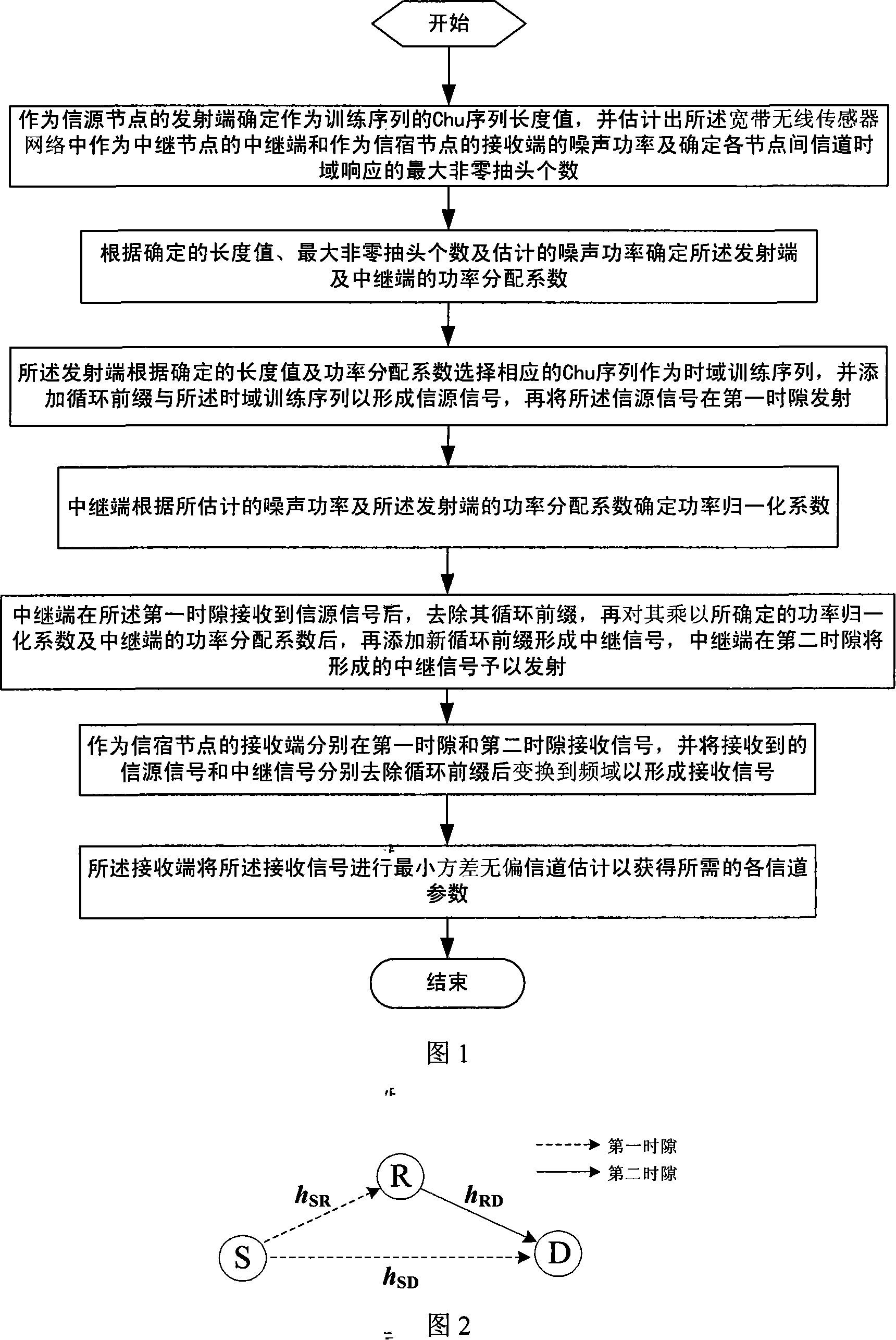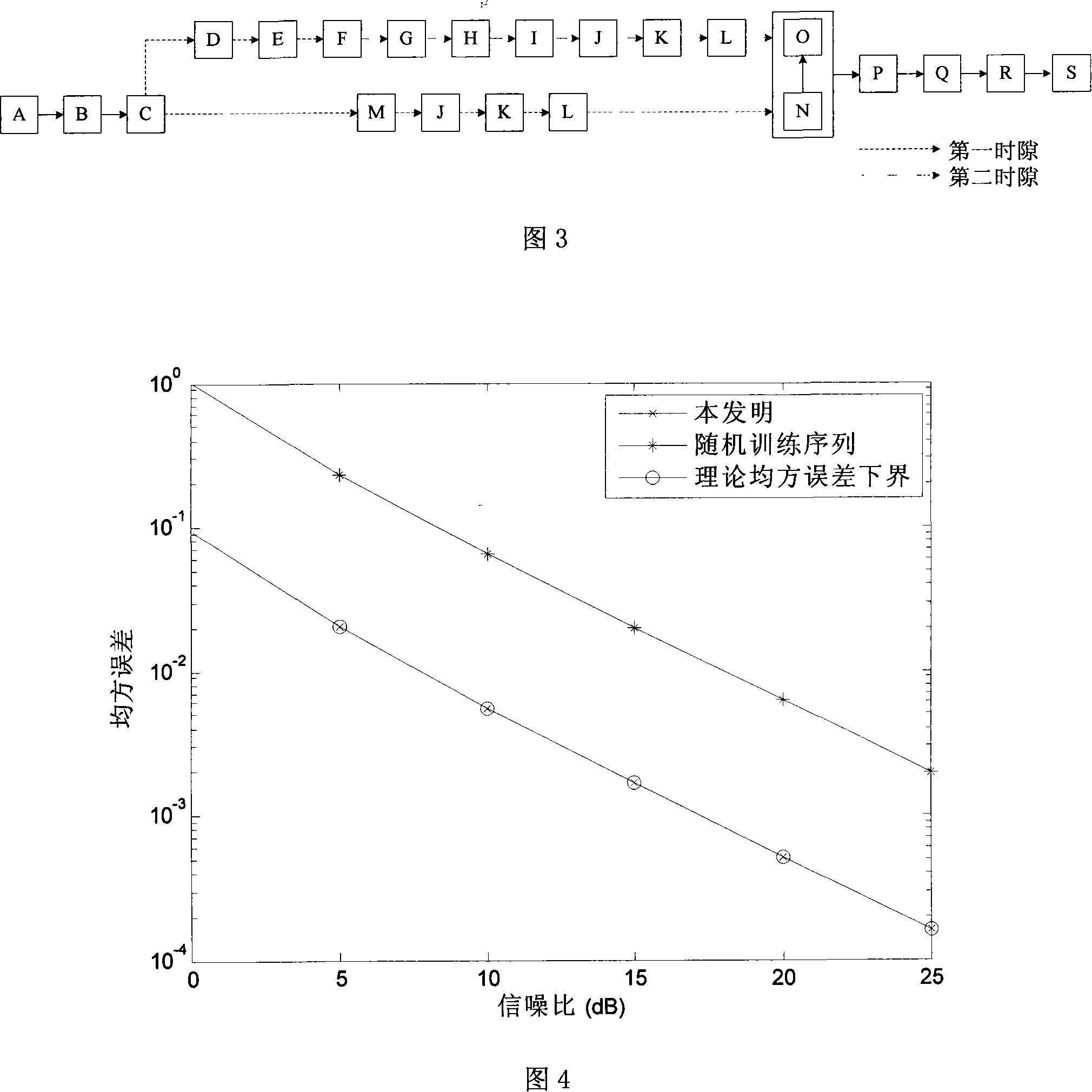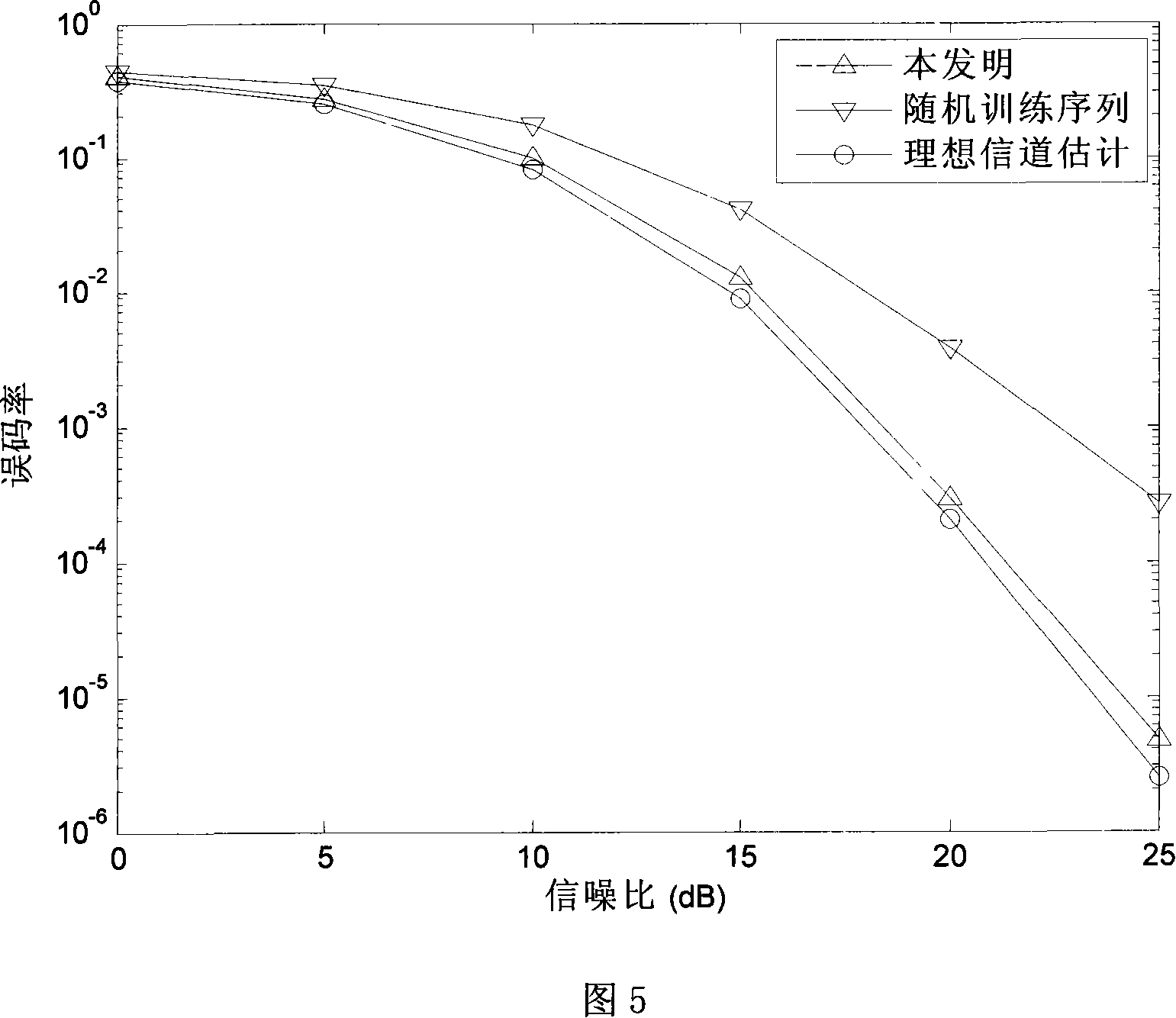Wireless sensor network channel evaluation method based on SC-FDE and virtual multi-antenna
A wireless sensor and sensor network technology, which is applied to the shaping network, transmission system, baseband system components and other directions in the transmitter/receiver to achieve the effect of low complexity, high precision and strong practicability
- Summary
- Abstract
- Description
- Claims
- Application Information
AI Technical Summary
Problems solved by technology
Method used
Image
Examples
Embodiment Construction
[0017] Referring to Fig. 1, the wireless sensor network channel estimation method based on SC-FDE and virtual multi-antenna of the present invention mainly includes the following steps:
[0018] Step 1: In a broadband wireless sensor network, the transmitter as the source node determines the length of the Chu sequence as the training sequence, and estimates the relay terminal as the relay node and the sink as the sink in the broadband wireless sensor network. The noise power of the receiving end of the node and the maximum number of non-zero taps to determine the time domain response of the channel between nodes. In this embodiment, the broadband wireless sensor network can use SC-FDE to combat multipath fading virtual multi-antenna system. In addition, the noise power of the relay terminal and the receiving terminal and the maximum number of non-zero taps of the channel time domain response between nodes can be determined according to the system parameter settings and the appl...
PUM
 Login to View More
Login to View More Abstract
Description
Claims
Application Information
 Login to View More
Login to View More - R&D
- Intellectual Property
- Life Sciences
- Materials
- Tech Scout
- Unparalleled Data Quality
- Higher Quality Content
- 60% Fewer Hallucinations
Browse by: Latest US Patents, China's latest patents, Technical Efficacy Thesaurus, Application Domain, Technology Topic, Popular Technical Reports.
© 2025 PatSnap. All rights reserved.Legal|Privacy policy|Modern Slavery Act Transparency Statement|Sitemap|About US| Contact US: help@patsnap.com



